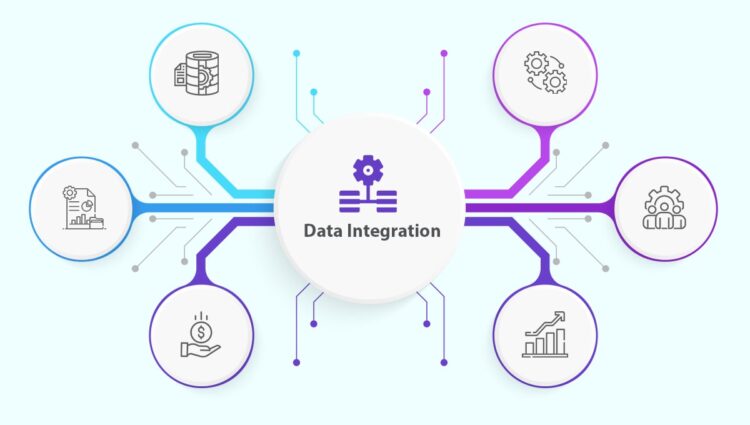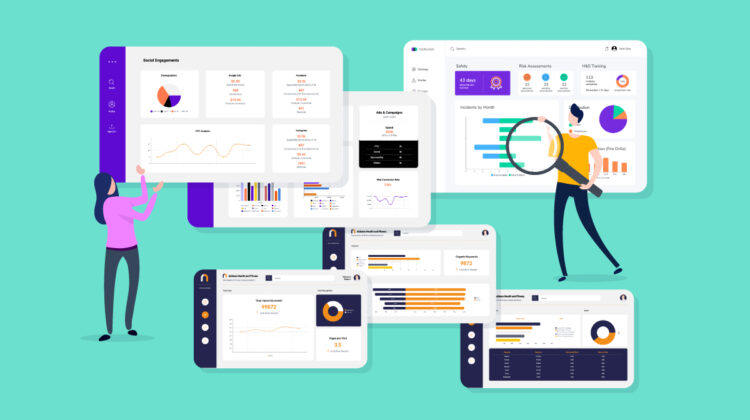Coaching is a dynamic field that thrives on personal growth, goal achievement, and continuous improvement. In the digital age, coaches are increasingly turning to technology to enhance their coaching practices and provide better insights to their clients. One such technological advancement is the creation of interactive coaching dashboards. These dashboards serve as powerful tools that help coaches gather, visualize, and analyze data, ultimately leading to better insights and more effective coaching outcomes.
In this article, we will explore in detail how coaches can create interactive coaching dashboards to optimize their coaching processes and empower their clients.
Page Contents
Understanding Interactive Coaching Dashboards
“Interactive coaching dashboards are digital platforms or tools that enable coaches to collect, organize, and present coaching-related data in a visually appealing and user-friendly manner.”
These dashboards typically integrate with various data sources, including client assessments, feedback surveys, progress reports, and performance metrics. By centralizing and visualizing this data, coaches can gain a comprehensive overview of their clients’ progress and development.
Interactive coaching dashboards are at the forefront of a technology-driven transformation in the coaching profession. These digital platforms and tools serve as a central hub for coaches to gather, organize, and present coaching-related data in a manner that is not only visually engaging but also highly intuitive for both coaches and their clients. Let’s delve deeper into the core components and benefits of interactive coaching dashboards:
Components and Benefits of Interactive Coaching Dashboards
1. Data Integration:

Source: blog.pixentia.com
Interactive coaching dashboards excel in their ability to seamlessly integrate data from diverse sources. Coaches can gather information from client assessments, feedback surveys, session notes, progress reports, and even external sources like performance metrics. This comprehensive approach allows coaches to form a holistic perspective of their clients’ journeys and development, transcending the limitations of fragmented data.
2. Visual Representation:
The hallmark of interactive dashboards lies in their capacity to translate raw data into compelling visuals. Through a variety of chart types, including line graphs, bar charts, scatter plots, and pie charts, coaches can transform complex data sets into accessible and meaningful insights. Visualizations are carefully designed to convey information clearly and concisely, making it easier for coaches and clients to grasp key trends and patterns.
3. User-Friendly Interactivity:
Interactivity is a central feature of these dashboards. Clients and coaches alike can actively engage with the data, thanks to interactive elements like filters, drill-down options, and tooltips. These features empower clients to take ownership of their growth by allowing them to explore specific aspects of their data and derive insights that resonate with their unique needs and goals.
4. Real-Time Updates:
Timeliness is crucial in coaching, and interactive dashboards often provide real-time or near-real-time updates. This means that the data displayed is always current, reflecting the most recent assessments, feedback, and progress reports. Clients and coaches can access up-to-the-minute information, fostering a dynamic and responsive coaching environment.
5. Comprehensive Storytelling:

Source: frp.newrow.com
Effective dashboards are more than just data repositories; they are storytellers. They weave together data points into a coherent narrative that guides coaches and clients through the coaching journey. By providing context and connecting the dots between various data sources, these dashboards facilitate a deeper understanding of progress, challenges, and opportunities for growth.
6. Informed Decision-Making:
Interactive coaching dashboards empower coaches to make informed decisions in real time. By having access to comprehensive and up-to-date data, coaches can adjust their coaching strategies and interventions as needed, ensuring that they are always aligned with their clients’ evolving needs and aspirations.
7. Client Engagement:
Beyond data analysis, interactive dashboards foster client engagement. Clients can actively participate in their coaching process by exploring their own data, setting goals, and tracking their progress. This involvement enhances motivation and accountability, driving clients toward their desired outcomes.
8. Privacy and Security:
Given the sensitive nature of coaching data, interactive dashboards prioritize data privacy and security. Robust encryption, access controls, and compliance with data protection regulations, where applicable, ensure that client information is kept confidential and secure.
Steps to Create an Effective Interactive Coaching Dashboard

Source: visme.co
Embarking on the journey to create an effective interactive coaching dashboard is a strategic move that can revolutionize the way coaches engage with their clients. These dashboards offer a dynamic platform to collect, visualize, and analyze data, providing profound insights for coaching success.
1. Clarify Your Objectives:
Before embarking on the creation of a coaching dashboard, it’s essential to clearly define your coaching objectives. Ask yourself what specific insights or information you aim to gain from the dashboard. Are you primarily interested in tracking client progress, evaluating the effectiveness of coaching techniques, or identifying areas for improvement? The clarity of your goals will serve as the guiding principle throughout the dashboard creation process.
2. Select Relevant Data Sources:
Identify and select the data sources that are most relevant to your coaching practice. These sources can include client assessments, self-assessments, feedback forms, session notes, and performance indicators. It’s crucial to ensure that the data collected is consistent, reliable, and can be integrated into the dashboard effectively.
3. Choose the Right Dashboard Platform:
Select a dashboard platform or software that aligns with your technical proficiency and the complexity of the dashboard you intend to create. There are various dashboard tools available, ranging from beginner-friendly options to more advanced platforms. Some popular choices include Tableau, Power BI dashboards, Google Data Studio, and Excel for simpler dashboards.
4. Gather and Prepare Data:

Source: ffind.com
Collect the necessary data from your chosen sources, ensuring that it is clean, structured, and free from errors. Data quality is paramount for accurate insights. Pre-processing steps may involve data cleaning, standardizing formats, and dealing with missing or erroneous data.
5. Plan the Dashboard Layout:
Carefully consider the layout and structure of your coaching dashboard. Begin with a clean and intuitive design that allows users to navigate seamlessly. Organize components logically, keeping in mind that the dashboard should present a coherent and informative story about the client’s progress and development.
6. Create Visualizations:
Visualizations are at the heart of an interactive coaching dashboard. Choose appropriate chart types, such as line graphs, bar charts, scatter plots, pie charts, or heatmaps, to effectively represent your data. Ensure that visualizations are clear, concise, and provide meaningful insights. Color coding and labeling are essential for data interpretation.
7. Implement Interactivity:
One of the most significant advantages of interactive dashboards is the ability for users to interact with the data. Implement features like interactive filters, drill-down options, tooltips, and dynamic time ranges to enhance the user experience. Clients should have the flexibility to explore the data, customize views, and derive insights tailored to their unique needs and interests.
8. Test and Iterate:
Thorough testing is a critical step in dashboard development. Ensure that all data is accurately represented, and interactive elements function as intended. Seek feedback from clients, colleagues, or beta testers to identify areas for improvement and refinement. Be prepared to make necessary adjustments and enhancements based on user feedback.
9. Ensure Data Security and Privacy:

Source: near.com
When handling sensitive client data, prioritize data security and privacy. Employ encryption, access controls, and other security measures to protect the data within your dashboard. Comply with relevant data protection regulations, such as GDPR or HIPAA, depending on your client base and location.
10. Train Yourself and Your Clients:
Familiarize yourself thoroughly with the dashboard and its features before introducing it to your clients. Provide training and clear guidance to clients on how to navigate and utilize the dashboard effectively. Ensure they understand the dashboard’s purpose and how it can enhance their coaching experience.
11. Monitor and Update:
Dashboard development is an ongoing process. Continuously monitor the data, gather feedback from clients, and assess the dashboard’s performance. As coaching sessions progress and new data becomes available, update the dashboard to reflect the latest information and insights. Regular maintenance ensures that the dashboard remains a valuable and up-to-date resource for coaching.
Conclusion
Interactive coaching dashboards are potent tools that can significantly enhance the coaching experience by providing better insights and empowering clients to actively participate in their growth and development. By following the comprehensive steps outlined above, coaches can create effective dashboards tailored to their coaching objectives and client needs.
These dashboards not only facilitate data-driven coaching but also foster a deeper understanding of clients’ progress, leading to more impactful coaching relationships. As coaches continue to invest in the development of interactive coaching dashboards, they can elevate their coaching practices and make more informed decisions to support their clients’ journey to success and personal growth.





